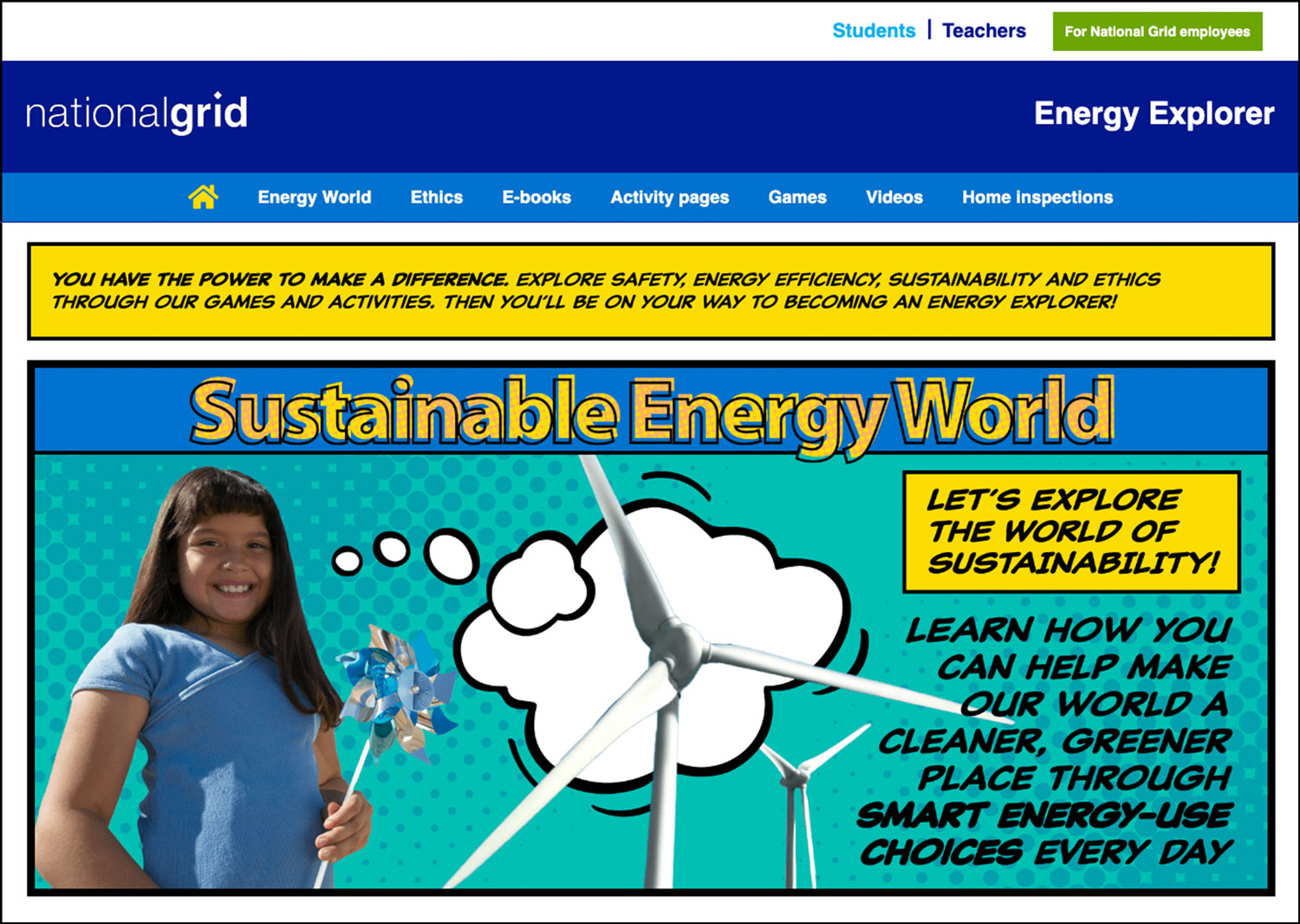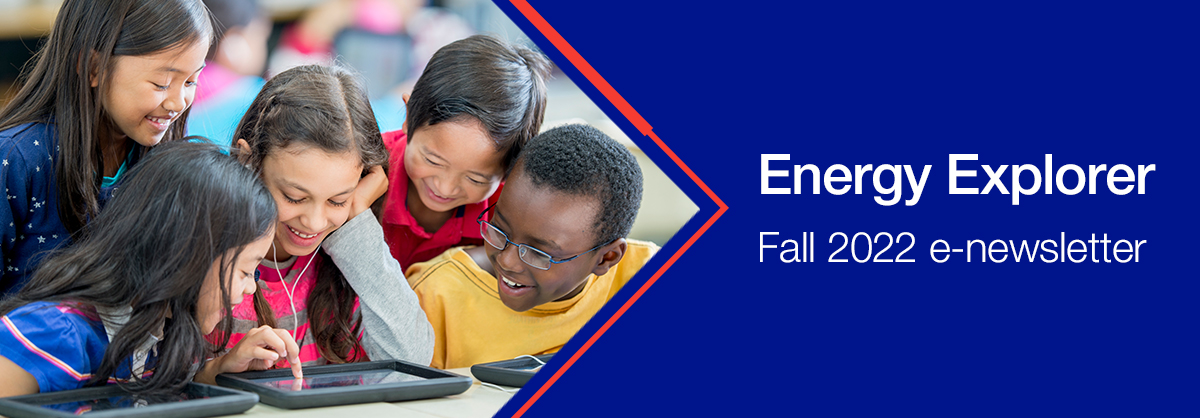 |
| All in for renewable energy! |
| National Grid is committed to playing a leading role in the transition to a “net zero” fossil-free future for cleanly heating and powering homes and businesses. You can bring your students on board with this effort by encouraging them to learn about renewable energy and how it can be used to generate electricity for washing, cooking and running devices; fueling vehicles; and heating buildings and water. National Grid’s Energy Explorer website offers a variety of resources for teaching renewable energy, including experiments, games and activities to engage students and their families. |
 |
| Order complimentary activity booklets |
| Our Energy Explorer website also features energy and safety education booklets – available as hard copy or e-books – covering renewable energy, energy efficiency and safety around electricity and natural gas. Features include energy conservation ideas and activities, class project ideas, challenges for student innovation and experiments.
|
|
|
|
 |
|
 |
| Harnessing wind energy: Let it blow |
| Throughout the U.S. and the world, the increasing effects of climate change have put the spotlight on renewable energy sources like sun, wind, biomass, geothermal energy and hydropower. Wind energy accounted for 42% of new U.S. power in 2020, while solar supplied 38% and natural gas 20%. Wind energy is expected to become an even larger source of electricity in coming years.
|
| Most wind power is produced from wind farms – large groups of turbines located in consistently windy locations. Small wind turbines can be used for individual homes, businesses and boats. The electricity they generate can be used to pump water or stored in large batteries for use at another time. Wind, used as a fuel, is free and non-polluting and produces no emissions or chemical wastes. |
 |
 |
| Energy efficiency challenge: What’s in a footprint? |
| Students may have heard the phrase “carbon footprint,” and helping them to understand the concept is a critical first step to their adopting energy-saving behaviors. Corporations and governments play a big part in helping reverse climate change by reducing their carbon footprint. But individuals and communities can make a critical difference as well. |
| A carbon footprint represents a person or entity’s energy usage in terms of the carbon-containing greenhouse gases their activities release into the environment over a given period of time. These gases in Earth’s atmosphere, such as carbon dioxide and methane, trap heat. They let sunlight pass through, but prevent the sun’s heat from leaving the atmosphere. When students strive to lower their carbon footprint with energy-saving habits, they help to reduce these heat-trapping greenhouse gases. |
|
| Explore all our educational resources |
| Check out our Energy Explorer website materials and order complimentary student booklets for grades K–8. Our booklets are a valuable addition to classroom learning, featuring home safety and energy use inspections, tips, activities and experiments to engage the whole household. |
|
|
 |
|
|
|

